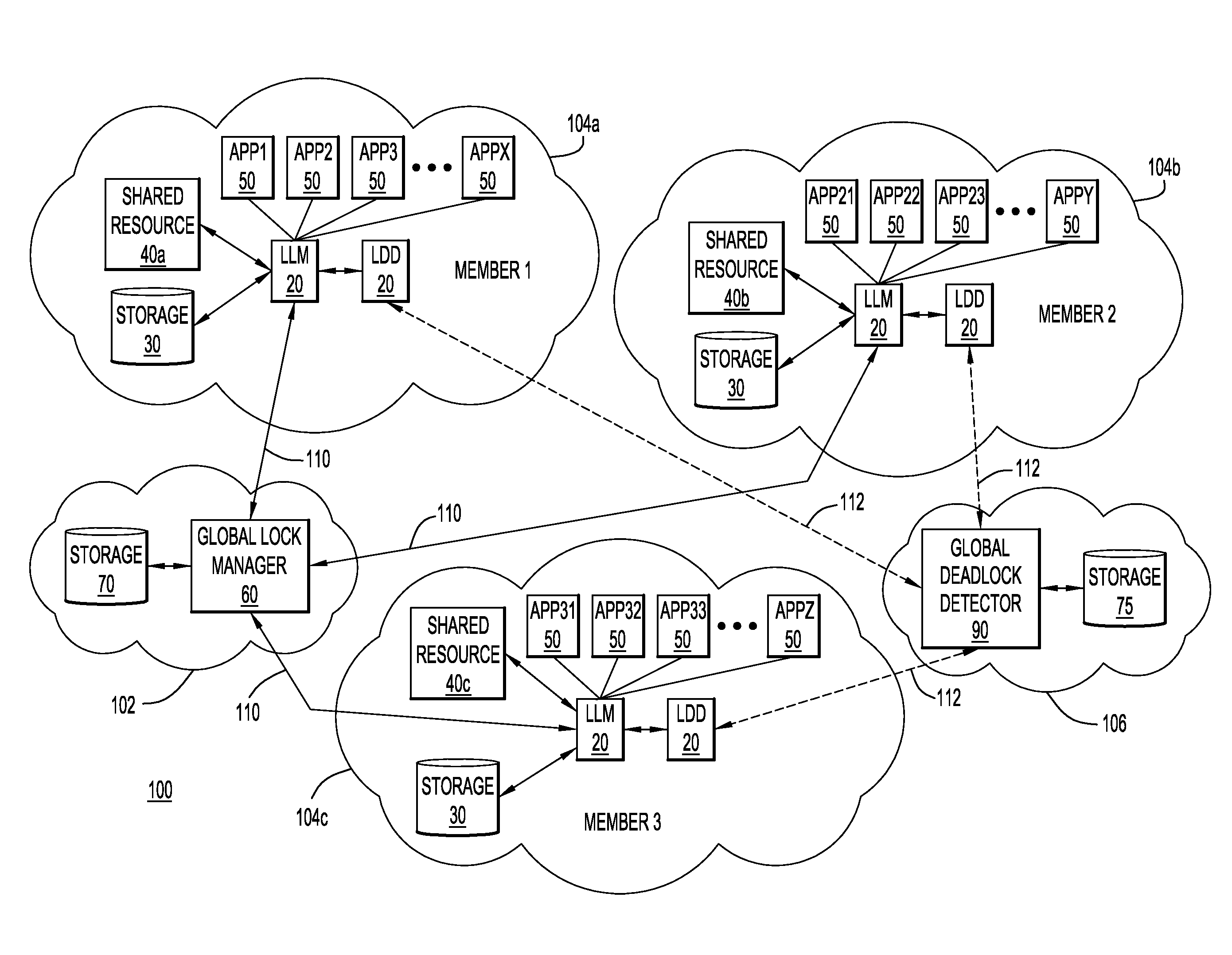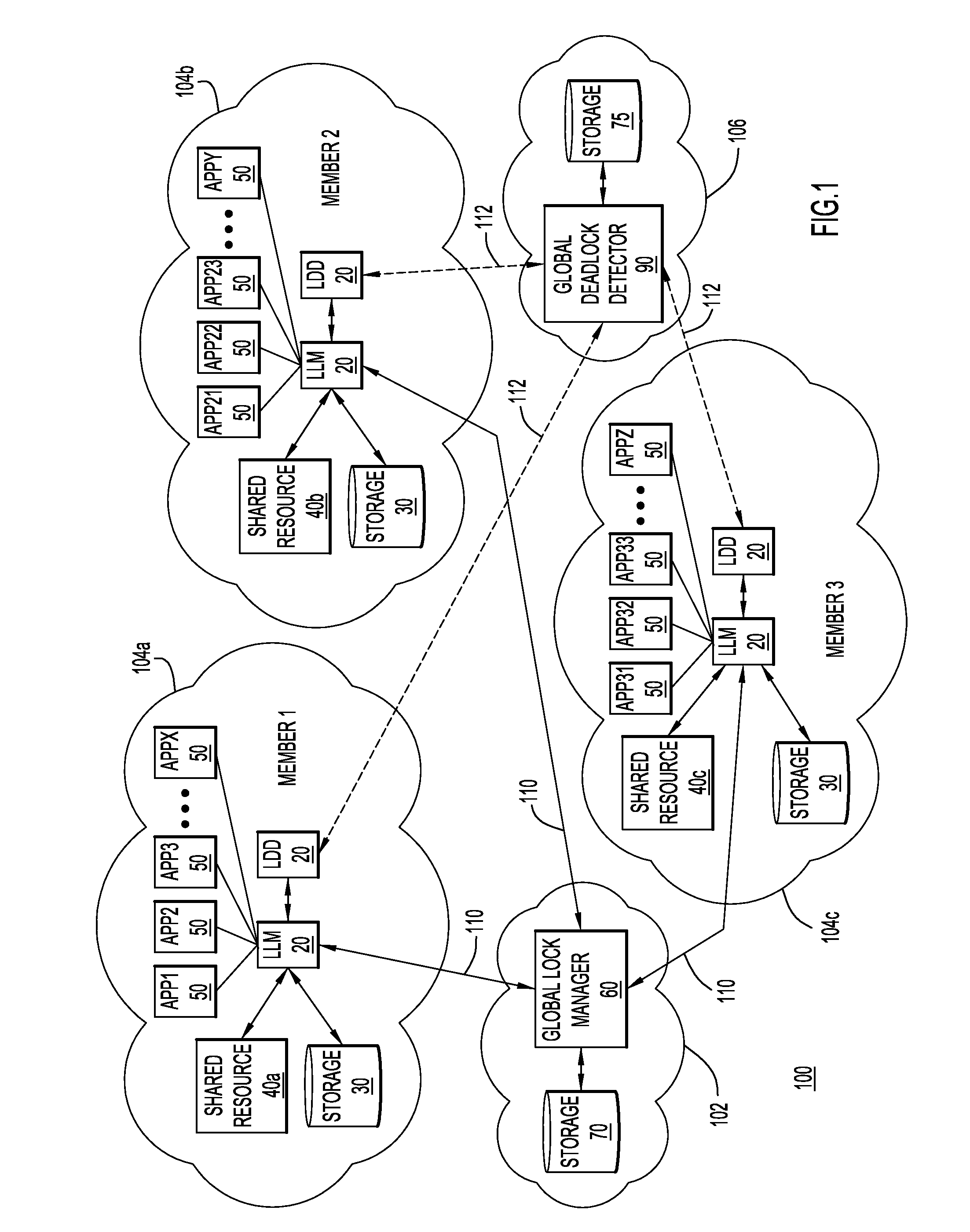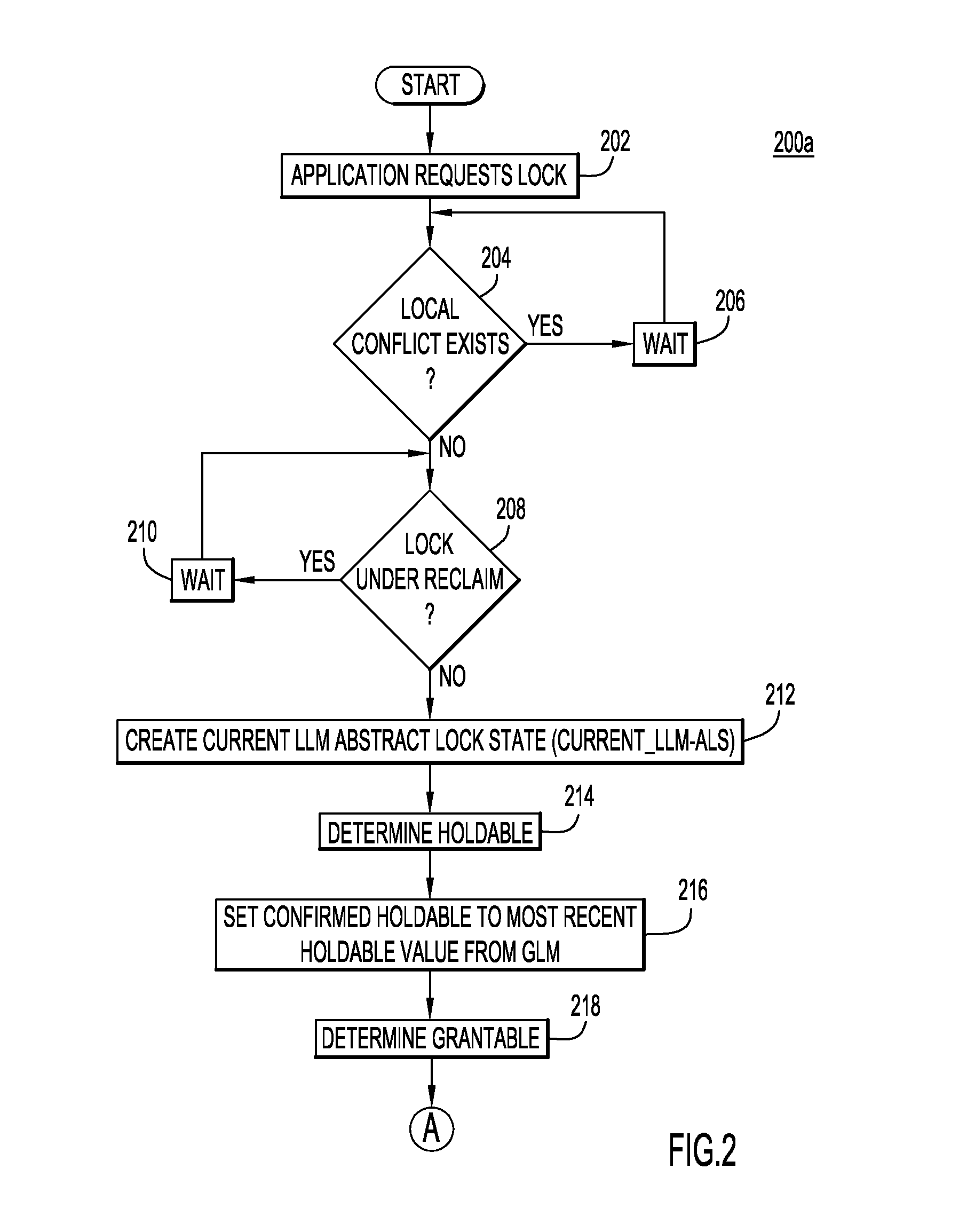Two-Level Management of Locks on Shared Resources
a technology of shared resources and locks, applied in the field of lock management, can solve the problems of significant processing overhead of messages for and achieve the effect of reducing the overhead of coordinating between large numbers of nodes
- Summary
- Abstract
- Description
- Claims
- Application Information
AI Technical Summary
Benefits of technology
Problems solved by technology
Method used
Image
Examples
Embodiment Construction
[0017]Referring now to the Figures, an exemplary computer system 100 according to embodiments of the present invention is illustrated in FIG. 1. The exemplary computer system 100 comprises one or more primary nodes 102 and multiple secondary nodes 104, which are communicatively connected to the primary node(s), for example via communication channels 110, 112. The system 100 may be a distributed computer system, cloud-based system, clustered database, or any other suitable multiple member system in which the present embodiments may be used. Each of the secondary nodes 104 comprises a local lock manager (LLM) 20, storage 30, shared resource(s) 40, and multiple applications 50, and at least one of the primary nodes 102 comprises a global lock manager (GLM) 60 and storage 70. Each of the secondary nodes 104 in the system also comprises a local deadlock detector (LDD) 80. The system 100 further comprises a global deadlock detector (GDD) 90 and storage 75, which may be located on any suit...
PUM
 Login to View More
Login to View More Abstract
Description
Claims
Application Information
 Login to View More
Login to View More - R&D
- Intellectual Property
- Life Sciences
- Materials
- Tech Scout
- Unparalleled Data Quality
- Higher Quality Content
- 60% Fewer Hallucinations
Browse by: Latest US Patents, China's latest patents, Technical Efficacy Thesaurus, Application Domain, Technology Topic, Popular Technical Reports.
© 2025 PatSnap. All rights reserved.Legal|Privacy policy|Modern Slavery Act Transparency Statement|Sitemap|About US| Contact US: help@patsnap.com



